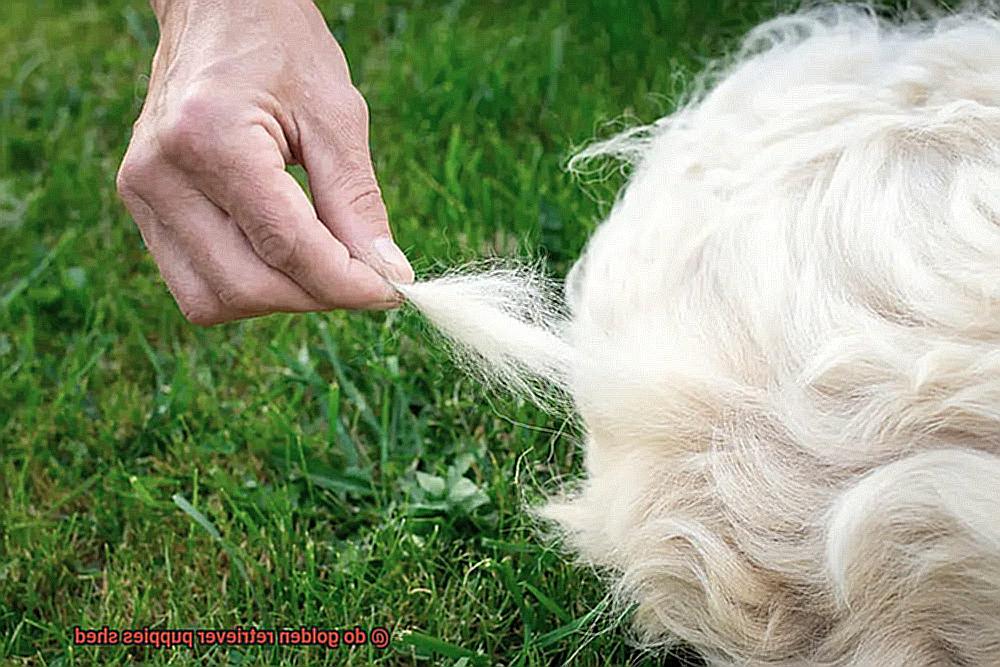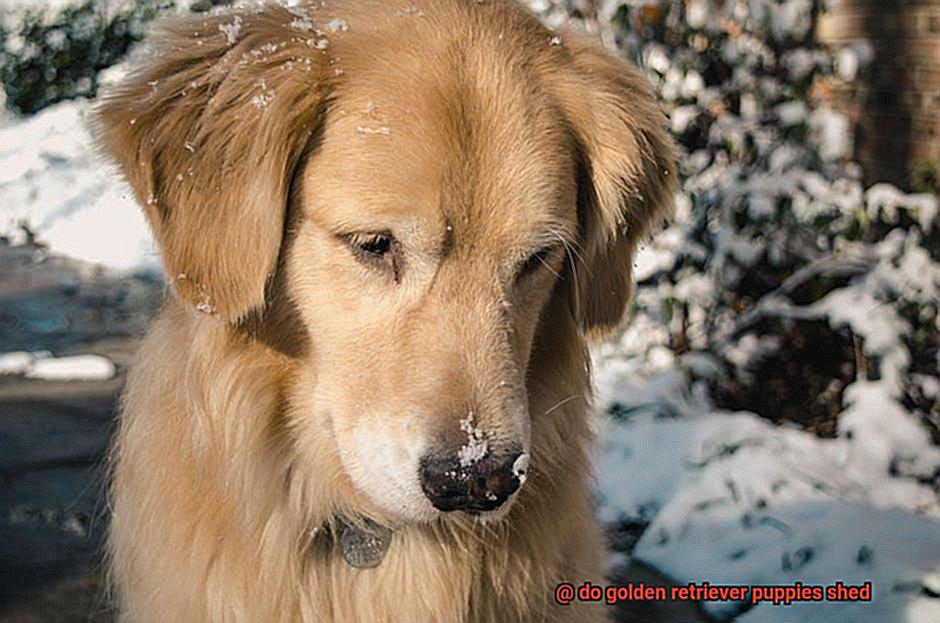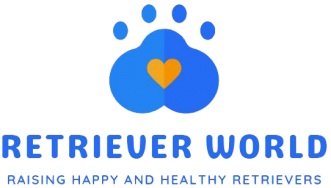Are you considering adding a golden retriever puppy to your family? If so, you’re probably wondering about their shedding habits. Well, the truth is that yes, they do shed. But don’t let that discourage you. Golden retrievers are one of the most beloved dog breeds for a reason – their friendly and playful personalities are simply irresistible.
While shedding can be a concern for some potential pet parents, it’s important to know that not all golden retriever puppies shed equally. Some may shed year-round, while others only during certain seasons. So before you make any decisions, it’s essential to understand what kind of shedding habits your furry friend might have.
But fear not. With proper grooming and care, you can minimize your golden retriever puppy’s shedding and keep them looking and feeling their best. In this blog post, we’ll explore everything you need to know about golden retriever puppy shedding – from coat type and age to health factors that can affect how much they shed.
We’ll also provide some invaluable tips on how to manage shedding in your new furry friend. From brushing techniques and bathing routines to dietary adjustments that can help promote healthy skin and fur growth, we’ve got you covered.
So if you’re eager to welcome a golden retriever puppy into your home but want to be prepared for what comes with it – including the occasional clump of fur on the couch – then read on. By the end of this article, you’ll be armed with all the knowledge you need to love and care for your new furry family member.
Shedding: A Natural Process in All Dogs
Contents
Golden retriever puppies are undoubtedly one of the cutest things on the planet. But with that undeniable cuteness comes one unavoidable fact: shedding. Shedding is a natural process in all dogs, including golden retriever puppies. It’s the process of losing old or damaged fur to make way for new fur growth. Shedding is a normal process that helps keep your puppy’s coat healthy and shiny.
As puppies grow, they shed their puppy fur and grow into their adult coat. This process usually starts at around three to four months of age and can last up to a year or more. During this time, you may notice an increase in shedding as the puppy’s old fur falls out and new fur grows in its place.
It’s essential to note that the amount of shedding can vary depending on a variety of factors, such as the puppy’s age, health, and diet. Dogs who are stressed or have health issues may shed more than usual, while those who are healthy and well-cared-for may shed less.
As a golden retriever puppy owner, it’s important to be prepared for shedding. Regular grooming can help minimize shedding by removing loose fur before it falls out on its own. Brushing your puppy’s coat at least once a week with a brush or comb designed for their coat type can help remove loose fur and prevent mats from forming.
In addition to regular grooming, providing your golden retriever puppy with a healthy diet can also help reduce shedding. A diet that is high in protein and includes essential fatty acids can help keep your puppy’s coat healthy and reduce shedding.
Shedding is a natural process in all dogs, including golden retriever puppies. It may seem excessive at times, but it’s essential for maintaining healthy coats. By understanding this process and taking steps to minimize shedding through regular grooming and a healthy diet, you can help keep your puppy’s coat healthy and shiny.
Why Do Golden Retriever Puppies Shed More Than Adult Dogs?
Golden Retriever puppies are the epitome of cuteness with their fluffy coats and playful personalities. However, their shedding can be a source of frustration for new puppy owners. So, why do Golden Retriever puppies shed more than adult dogs?
One reason is that puppies have more hair than adult dogs. As they grow, their coat becomes denser and longer, leading to more shedding. Additionally, as puppies are still developing their adult coat, they shed their puppy coat which can result in a significant amount of hair fall.
Another reason is that puppies are more active than adult dogs. They love to explore their surroundings and play, which causes their fur to rub against surfaces and fall out. Plus, their curious nature often leads them to chew on things, including their own fur – resulting in more shedding.
Stress can also be a factor in excessive shedding in puppies. The transition to a new home or training can cause stress in puppies which can result in hormonal changes in their body leading to increased shedding.
However, don’t fret. Although Golden Retriever puppies shed more than adult dogs, there are ways to manage and control the shedding. Regular grooming such as brushing and bathing can help remove loose hair and keep your pup’s coat healthy. Additionally, maintaining a healthy diet rich in Omega-3 fatty acids can help reduce shedding.
The “Puppy Coat” Phase
This transformation is called the “Puppy Coat” phase, and it’s a crucial period in your puppy’s development.
During this time, your puppy will shed its soft and fluffy puppy coat and replace it with a more adult-like coat. Shedding can become more frequent and noticeable, which can be a bit frustrating for you as an owner. However, shedding during this time is completely normal and signals that your pup is growing up.
Proper nutrition and grooming are essential components of managing shedding during the “Puppy Coat” phase. Feeding your puppy a high-quality diet will ensure that they receive all the necessary vitamins and nutrients for healthy coat growth. Regular brushing will help remove loose fur and prevent matting.
Not only does proper grooming help manage shedding, it also promotes overall health. Regular brushing promotes healthy skin and coat, prevents tangles and mats, and helps distribute natural oils throughout the fur.

It’s important to remember that shedding during the “Puppy Coat” phase is only temporary. Once your golden retriever reaches adulthood, shedding will become less frequent and much more manageable.
How to Manage Shedding in Golden Retriever Puppies
Golden retriever puppies are adorable, playful, and oh-so-fluffy. But, as a new owner, you may have noticed that they shed—a lot. Shedding is a natural process that all dogs go through, but it can be overwhelming for those who are not familiar with the breed’s grooming requirements. In this blog post, we will explore how to manage shedding in golden retriever puppies with five easy steps.
Step 1: Embrace Regular Brushing
Regular brushing is the first step to managing shedding in golden retriever puppies. Not only does it remove loose fur, but it also stimulates the skin and distributes natural oils throughout the coat, preventing excessive shedding. Use a slicker brush or a comb with long teeth to gently remove loose hair from the undercoat and topcoat. And don’t forget to give your puppy some love while you’re at it.
Step 2: Feed Your Puppy a Healthy Diet
A healthy diet can do wonders for your puppy’s coat. Look for high-quality dog food that contains essential fatty acids like Omega-3 and Omega-6, which help strengthen the coat and reduce shedding. Talk to your vet about recommending the right food for your puppy’s specific needs. Think of it as feeding your puppy a superfood smoothie for their coat.
Step 3: Regular Bathing
Regular bathing can also help manage shedding in golden retriever puppies. However, avoid over-bathing as it can strip the coat of natural oils, leading to dry skin and increased shedding. A good rule of thumb is to bathe your puppy every 4-6 weeks with a mild shampoo formulated for dogs. Be sure to rinse thoroughly to avoid leaving any residue that could irritate their skin.
Step 4: Use Supplements
In addition to a healthy diet, supplements like fish oil can also help reduce shedding in golden retriever puppies. Consult with your vet before giving your puppy any supplements, as too much can be harmful.
Step 5: Be Prepared for Seasonal Shedding
Seasonal shedding is a natural process for golden retrievers. Twice a year, they will shed their undercoats to make way for new hair growth. This process can take several weeks and can result in a significant amount of hair loss. Therefore, it is crucial to be prepared for shedding during these periods. Regular grooming and bathing during these times will help manage shedding and keep your puppy healthy.
Grooming Tips for Reducing Shedding
Golden retriever puppies are beloved for their adorable faces, playful personalities, and of course, their luscious coats. However, as all pet owners know, with great beauty comes great shedding. Shedding is a natural process for dogs, but it can be frustrating to deal with the fur that ends up everywhere in your home. Luckily, there are some grooming tips that can help reduce shedding in golden retriever puppies.
Regular Brushing
The first and most important step in reducing shedding is regular brushing. Golden retriever puppies have a thick double coat that requires frequent brushing to remove dead hair and prevent matting. Use a slicker brush or a rake brush to remove loose hair and tangles. Be gentle when brushing to avoid hurting your puppy’s sensitive skin.
Regular Bathing
Bathing is another way to reduce shedding in golden retriever puppies. However, it’s important not to over-bathe your puppy as it can strip their coat of natural oils and cause dryness. Bathing once every three months is sufficient for most golden retrievers. Use a mild shampoo specifically designed for dogs and rinse thoroughly.
Healthy Diet
A healthy diet can also contribute to reducing shedding in golden retriever puppies. A diet rich in omega-3 fatty acids can improve coat health and reduce shedding. Omega-3 fatty acids can be found in fish oil supplements or certain types of dog food. Consult with your veterinarian to determine the appropriate amount of omega-3 fatty acids for your puppy.
Clean Home

Keeping your home clean is also important in reducing shedding. Regular vacuuming and washing your puppy’s bedding once a week can help remove any loose hair from your home. Investing in an air purifier can also help reduce airborne allergens and pet dander.
Professional Grooming
Lastly, regular visits to a professional groomer can also help reduce shedding. Groomers have special tools and techniques that can remove excess hair and prevent matting. They can also provide recommendations on grooming products and techniques that are best suited for your golden retriever puppy’s coat type.
Nutrition Tips to Promote Healthy Skin and Coat
Golden retriever puppies are undoubtedly adorable and with their beautiful coats, they can steal anyone’s heart. However, shedding is a natural process that comes along with their growth and development. Fortunately, by providing your puppy with proper nutrition, you can manage shedding and promote healthy skin and coat. Here are five essential tips to help you achieve this goal.
Fatty acids are crucial for healthy skin and coat in golden retriever puppies. Omega-3 and omega-6 fatty acids keep the skin moisturized, prevent dryness, flaking, and itching. Feed your puppy foods rich in essential fatty acids such as salmon, flaxseed, and chicken to maintain a glossy and lustrous coat.
Protein is vital for the growth and repair of tissues, including the skin and coat. Lean sources of protein like chicken, fish, turkey, or lamb support healthy hair follicles and skin cells development in your golden retriever puppy.
Vitamin E is an antioxidant that protects the skin from damage caused by free radicals while boosting the immune system. Foods high in vitamin E include sunflower seeds, almonds, spinach, and sweet potatoes. Including these foods in your puppy’s diet will help nourish their skin and coat.
Proper hydration is essential for maintaining healthy skin and coat in golden retriever puppies. Water allows for natural oils to be produced, which keeps the skin hydrated, preventing dryness and flakiness. Make sure your puppy always has access to clean water.
Consult with your veterinarian to determine the best diet for your golden retriever puppy’s specific needs. Your veterinarian can recommend high-quality dog food that contains all essential nutrients to promote healthy skin and coat while ensuring your puppy receives proper nutrition.
Conclusion
In conclusion, it’s important to understand that golden retriever puppies do shed, but with a little extra love and care, shedding can be effectively managed. Shedding is a natural process for all dogs, including golden retriever puppies, and can vary depending on factors like age, health, and diet.
Regular grooming is key in managing shedding in golden retriever puppies. Brushing and bathing your furry friend will help remove loose fur and prevent matting while promoting healthy skin and coat. Feeding your puppy a healthy diet rich in essential fatty acids like Omega-3 and Omega-6 can also reduce shedding by strengthening their coat. And don’t forget supplements like fish oil which can be beneficial for reducing shedding in golden retriever puppies.
It’s important to note that during the “Puppy Coat” phase, your puppy will shed its soft and fluffy puppy coat as they grow into their adult coat. Shedding during this time is normal but can be managed through proper nutrition and grooming.
In addition to regular grooming practices, keeping a clean home is essential in managing shedding in golden retriever puppies. Regular vacuuming and washing of your puppy’s bedding will help remove loose hair from your home while investing in an air purifier can reduce airborne allergens.
By following these tips for managing shedding in golden retriever puppies, you’ll be able to enjoy all the joys of owning one of the most beloved dog breeds without worrying about excessive shedding.









